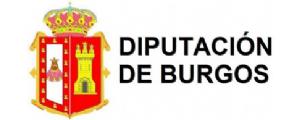Covarrubias
The village is declared historical artistic joint. To take a walk by its streets, authentic remains of the medieval past, is a delight. But on the way to Covarrubias we will find other treasures, like the Monastery of San Pedro de Arlanza.
Monastery of San Pedro de Arlanza
Cuna de Castilla
Leaving back this Monastery and always accompanied by the Arlanza river, we will arrive at the medieval villa of Covarrubias. Founded on 978 by count García Fernández, the villa prospers under the care of its ladies abbesses, like Doña Urraca, daughter of the founding count, whose tragic death surrounds the stones that raise the medieval tower. Another Urraca, daughter of Fernando I and Doña Sancha, granted "fueros" to Covarrubias in 1148. This town, declared joint historical-artistic, is the best and more representative example of typical architecture of the zone. Numerous houses of traditional type, like the house of Doña Sancha or theone of the Bishop Peña, populate all their streets, embellishing the villa with their facades. Between its monuments emphasizes Ex-Colegiata of San Cosme and San Damián, that welcomes the pantheons of numerous illustrious families, like count Fernán González and his wife, Doña Sancha, who rests in a beautiful spanishromain tomb of century IV. The altarpiece is baroque and the organ (s. XVII) is the unique one of its time in operation. In the cloister there is the gothic tomb of infant Cristina of Norway, first wife of the infant Felipe, brother of Alfonso X "el Sabio". The Museum offers an interesting collection of pieces of sacred art with romanic capitals, tables of Berruguete and Van Eyck, as well as an impressive altarpiece of the Adoration of the Magic Kings.
Other places to visita are the Fernán González Tower. Mozárabe construction of the X Century, it is also called Doña Urraca Tower, for the tradición to put here the death of the Princess. Or the archive of the Adelantamiento de Castilla, one of the enter gates to the historical city center of Covarrubias that was built in 1575 by Felipe II, whos shield is on the top of the front.









